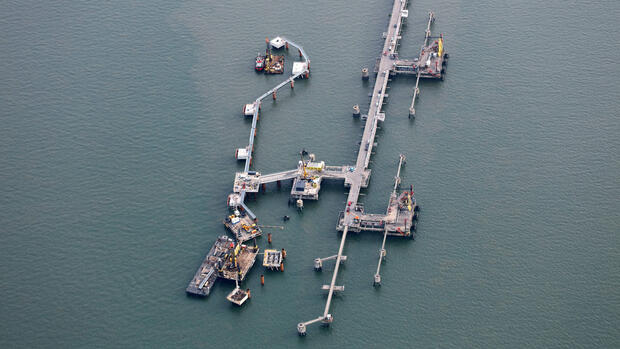Most liquefied natural gas came to Germany via Wilhelmshaven. Around 21.8 terawatt hours of gas were fed in there from the beginning of January to the end of June.
(Photo: IMAGO/blickwinkel)
Bonn Germany’s multi-billion dollar terminals for importing liquefied natural gas (LNG) only account for a fraction of Germany’s gas imports around six months after they were launched. This comes from data from the Federal Network Agency. According to this, Germany imported a total of around 526 terawatt hours of gas in the first half of 2023, almost half of it from Norway. In contrast, only 33.8 terawatt hours came via the three LNG terminals in Wilhelmshaven, Brunsbüttel and Lubmin. This corresponds to a share of 6.4 percent.
Most liquefied natural gas came to Germany via Wilhelmshaven. Around 21.8 terawatt hours of gas were fed in there from the beginning of January to the end of June, as the Federal Ministry of Economics announced on request. 5.2 terawatt hours were imported via Brunsbüttel. According to the private operator Deutsche Regas, the terminal in Lubmin contributed almost 7 terawatt hours. According to the Federal Association of Energy and Water Industries (BDEW), Germany obtains its LNG for the most part from the USA.
The federal government had announced LNG import capacities of 13.5 billion cubic meters of gas for this year. That corresponds to more than 130 terawatt hours – and thus about four times the amount of LNG that was actually imported in the first half of the year.
The cost of building the LNG infrastructure is immense. The federal government has made around 9.8 billion euros available for this until 2038. However, the Ministry of Economic Affairs is already anticipating even higher spending.
In addition to the three LNG terminals already in use, several more are in preparation. Critics fear that overcapacity will be created for fossil energy, which is larger than would be necessary to replace the previous gas imports from Russia.
More: Behind Germany’s new liquid gas supplier is a branched network of shipowners and the rich
